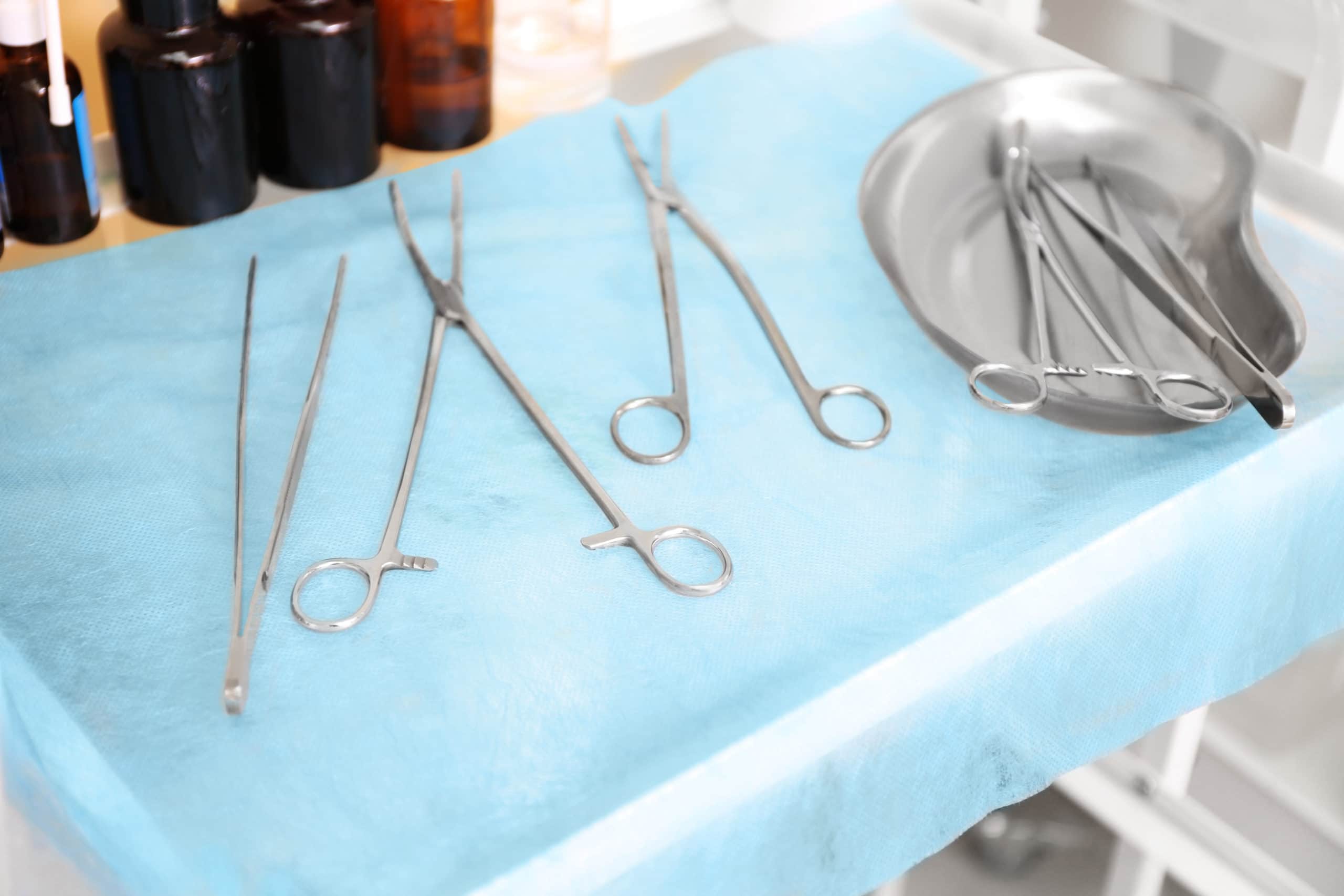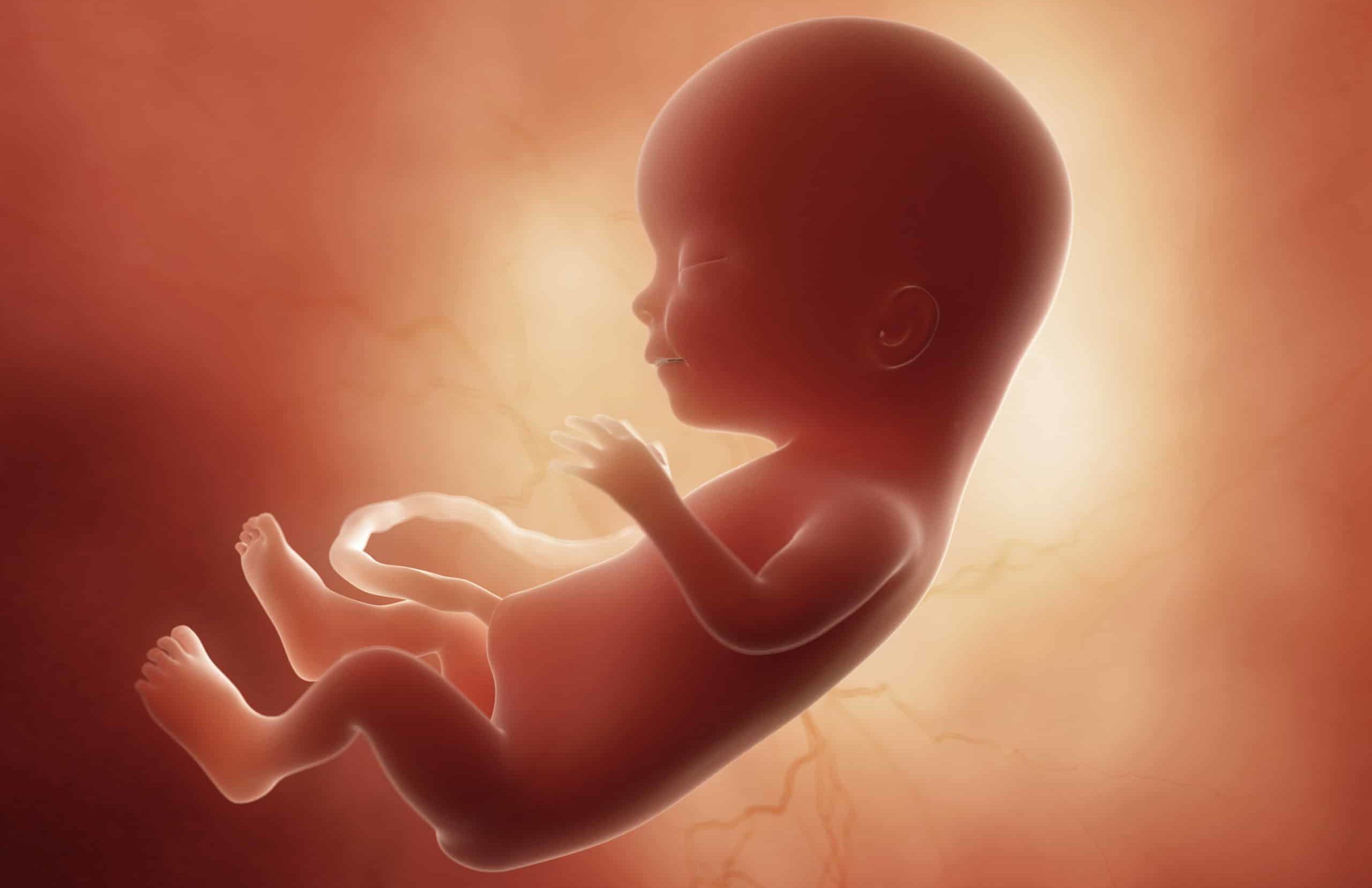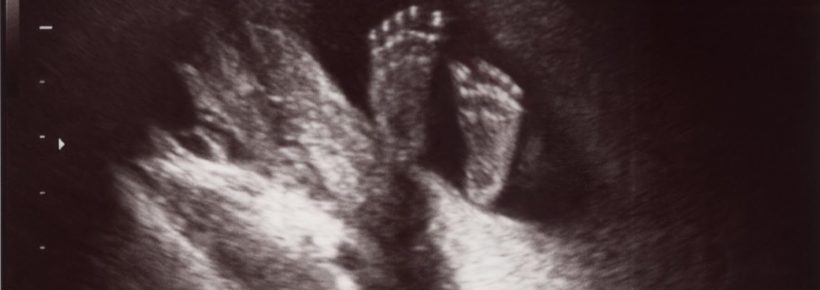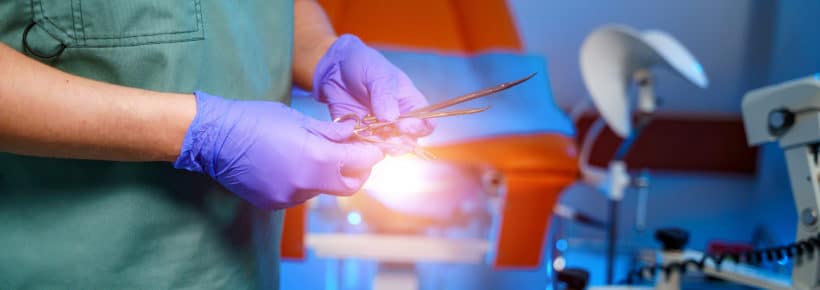Abortion comes with a long list of physical dangers, but often the emotional effects are the most devastating to the mother. Read on to learn about seven types of surgical abortion and to hear stories from real women who know the pain and heartbreak firsthand.
Surgical Abortion Stories
There are hundreds of stories on Abortion Changes You, Priests for Life and Silent No More. While each story is entirely unique, of course, they are all the same in two important ways — they each tell a tale of emotional desolation, and they are incredibly difficult to read.

Each of the stories on these websites betrays the fact that abortion is nothing more than a moneymaking business built upon the sorrow of women, and that the slogan “pro-choice” is the blackest of lies.
-
“Cindy”: “If I’d only known how I’d feel afterwards, longing for my lost baby. I now want to tell others considering abortion “Don’t do it!” If I had someone telling me, “God has a plan for this child, give her/him a chance!” I would not have done it. It’s as simple as that!”
-
“Stephanie”: “I was devastated that I had taken my own child’s life! I went through many years of pain and suffering and hating myself.”
-
“Becky”: “The abortion I had when I was just 19 really has ruined the rest of my life. Once upon a time I thought it might get better over time and maybe I might heal. I have not healed at all. It has been 15 years and I am as a sad and depress[ed] and despondent about the entire situation as I have ever been.”
Society in general cares even less about the feelings of men than about those of women. Men get the message even more strongly that they are weak or unmanly for losing their chance at fatherhood, and that nobody understands or even cares why they grieve. Many men write emotional and heartbreaking testimonials:
- “I wanted to keep it and she didn’t. I now find myself feeling damaged and guilty even though it wasn’t my decision to terminate the pregnancy.”
- “I have lived with this pain most of my life, the older I get the more the pain gets worse, I am telling this to help anybody thinking of an abortion to spare you from the pain it brings to your life, I think it about everyday, I ask God everyday to forgive me.”
- “It’s been over 20 years and I still think about it all the time. The guilt I feel is real. We were brainwashed into thinking something that is very wrong was okay. It breaks my heart to see future generations being brainwashed like we were. I’m sorry. I’m sorry to a life I never knew. I’m sorry to a girl I never knew. I’m sorry to myself for missing out on an opportunity of a lifetime in exchange for a lifetime of regret.”
Surgical Abortion Procedures
An abortionist can select from a variety of procedures in his arsenal.

Suction Abortion
Also known as a “vacuum abortion” or “suction curettage,” this is the most common abortion method in the first trimester, but it can be used up to 12 weeks. The abortionist dilates the cervix, then inserts a suction curette [which consists of a hollow tube with a sharp tip] into the cervix and then into the uterus. The suction machine tears the developing baby apart, sucks the pieces through the tube and deposits them into a bag. Either the abortionist or an assistant assembles or checks the baby’s body parts to ensure a complete abortion.1
Dilation and Curettage
Abortionists use D&C (also known as “sharp curettage”) most often during the first trimester of pregnancy, but it can also be used up to 12 weeks of fetal development. This method is much less commonly used by abortionists than suction, accounting for only about 2% of all abortions in the United States.2
The abortionist inserts a sharp looped knife (curette) into the uterus to scrape its walls. He then cuts the preborn baby apart, removes the body parts, and checks them for completeness.
Unlike other abortion methods, D&C has an alternative and entirely legitimate use. Physicians often perform curettage after a miscarriage to ensure that the uterus is empty. This avoids the infection that may result from the retention of necrotic [decaying] tissue, either from the baby or from the placenta, or from other uterine conditions or disorders.
It is vitally important to ensure there is no baby present before this type of D&C is performed. Many women have thought they had miscarriages because they passed blood clots or tissue, but subsequent sonograms or other tests have revealed that they were still pregnant.
In some cases, the woman actually lost a recognizable baby during a miscarriage, but ultrasound revealed that she was still pregnant with the lost baby’s twin. Many doctors assert that ultrasound testing should precede any D&C, or the woman risks having an unintentional surgical abortion.
Dilation and Evacuation
The D&E abortion is most commonly used during the first half of the second trimester (13 to 24 weeks) but is sometimes used up to about 28 weeks. The baby is dismembered with a sharp knife, and the pieces are removed one by one. In many cases, the abortionist cuts off one or more of the baby’s limbs and waits until he or she bleeds to death before proceeding with the abortion. Larger babies must have their heads crushed so the pieces can pass through the cervix.3
Abortionist Warren Hern, who specializes in late-term abortions, has said, “We have reached a point in this particular [D&E] technology where there is no possibility of denial of an act of destruction by the operator. It is before one’s eyes. The sensations of dismemberment flow through the forceps like an electric current.”4
Pro-abortion groups are particularly enthusiastic about D&E because, unlike other second-trimester abortion methods such as saline and prostaglandin, there is absolutely no chance that the baby will survive.
Hern also authored the how-to book Abortion Practice, in which he describes some of the grislier aspects of the D&E abortion: “The procedure changes significantly at 21 weeks because the fetal tissues become much more cohesive and difficult to dismember….A long curved Mayo scissors may be necessary to decapitate and dismember the fetus.”5
Usually the cervix must be dilated for one to three days before a D&E abortion. The most popular method of cervical dilation involves the insertion of dried seaweed sticks called laminaria, which absorb fluids and swell, thereby expanding the cervical diameter. The abortionist may also forcibly dilate the cervix over a period of just a few minutes with a series of stainless-steel rods of increasing diameter.
It is a common ploy for abortionists to tell their patients that once the laminaria are inserted the abortion process cannot be reversed. Pro-life activists in general, and sidewalk counselors in particular, must be aware of the fact that laminaria can be removed by any emergency room physician if the woman changes her mind about having an abortion.
Saline Abortion
This method is rarely used today due to the possible harm to the mother. Also known as the “intra-amniotic injection,” “saline solution method,” “instillation abortion” or “amnio abortion,” it is used in the second trimester and early third trimester.
To begin with, the abortionist withdraws about 200 milliliters (6-7 ounces) of amniotic fluid and replaces it with a saline or urea solution.6 The unborn baby breathes and swallows this concentration and dies painfully over a period of hours from salt poisoning, dehydration, brain hemorrhage and convulsions. Delivery occurs 24 to 48 hours after the baby dies. The skin of the baby is either completely burned or turned a cherry-red color, which is why some abortionists and nurses refer to them as “candy-apple babies.”
Many mothers who have undergone saline abortions report feeling the baby’s movements increase to a desperate frenzy as its skin and mucous membranes are scalded and it dies in unspeakable agony.

Another reason the salt poisoning method has become less popular is that it occasionally results in a hardy baby who survives the torture ― the so-called “dreaded complication.” Therefore, abortionists now generally use hysterotomy or a modified D&E method that guarantees the baby’s death.
Prostaglandin Abortion
Prostaglandin abortions (sometimes referred to as “labor induction abortions”) are used during the late second trimester and third trimester of pregnancy.7 About eight milliliters of prostaglandin hormone is injected into the uterine muscle, which contracts to expel the baby in an artificially-induced and extremely violent premature labor that takes an average of about 20 hours to complete. Alternatively, 20 to 40 milligrams of a prostaglandin analogue (Prostin F2 Alpha, dinoprost tromethamine) are infused following the placement of laminaria. Sometimes saline or urea are combined with prostaglandin for infusions.
This method of abortion is now rarely used because up to 7% of preborn babies are born alive during the procedure. In such cases, the abortionist must secretly murder the baby or risk a so-called “wrongful life” situation and a possible lawsuit and bad publicity.
Hysterotomy
A hysterotomy is actually a Cesarean section done during the last trimester of pregnancy when other types of abortion may be too dangerous to the mother. The mother’s uterus is surgically opened and the baby is lifted out.
The helpless baby is then either left to die or is killed by the abortionist or his staff.8 According to Planned Parenthood’s Alan Guttmacher Institute, abortionists committed about 1,000 hysterotomy abortions every year in the United States alone in the mid-1980s, but this number has declined to about one hundred annually.9
Intercardiac Injection
At about 16 weeks, ultrasound imagery is used to pinpoint the location of the baby so that a long needle may be guided into its heart. The abortionist injects potassium chloride or some other fluid which causes an immediate heart attack in the preborn baby.10 After a period of days, the dead preborn child is delivered naturally, or the process can be accelerated with cervical dilation followed by prostaglandin injections.
This method is most commonly used for “pregnancy reduction” abortions, when the mother has multiple pregnancies and would like to eliminate some, but not all, of her preborn children.
Partial-Birth Abortion
Also known as dilation and extraction, or D and X abortion, partial birth abortion has been the subject of much legal controversy because it is so gruesome. In 2000, the Supreme Court decided Sternberg v. Carhart, which struck down a Nebraska law that had banned partial birth abortion.11 In 2003, President George W. Bush signed the Partial-Birth Abortion Ban Act, which did the same as the Nebraska law, but nationwide. This time, the Supreme Court upheld that law, in its 2007 Gonzales v. Carhart decision.12 That decision has stood so far.
So what is the procedure that generated such controversy? First, the abortionist twists the baby’s foot so that he or she will be in breech position (feet first). Then, after dilating the woman’s cervix with laminaria (seaweed), the abortionist pulls the baby feet-first all the way except for his or her head. After this, the abortionist creates a hole in the baby’s skull using surgical scissors and vacuums out his or her brains. This causes the baby’s skull to collapse so the abortionist can pull him or her out to complete the abortion.13
Some variations of partial-birth abortion (not necessarily called D&X abortion) include head-first partial delivery and/or crushing of the baby’s skull.14
Faced with this absolutely horrifying act, you might ask why anyone would ever need it. Martin Haskell, the abortionist who invented the so-called “technique,” gave the short answer when he said, “[M]ost surgeons find dismemberment at twenty weeks and beyond to be difficult due to the toughness of fetal tissues at this stage of development.”15 In other words, the skin and bones of a baby more than twenty weeks are too thick to be easily ripped apart.
The Reality of Post-Abortion Syndrome
When considering the acts of destruction just described, it is understandable that a woman having an abortion will have strong feelings about it both during the procedure and afterwards. After all, abortion is a deeply unnatural act. It is the destruction of the flesh of her flesh. It violates the protective instincts that both women and men feel about their children, even (perhaps especially) when they are unborn.

Not only do those directly involved in abortion recognize it as a violent and bloody injustice, but others do as well. Abortionists are finding that it is far more difficult to erase millions of years of instinct and nurturing than it is to erase an unborn child from the mind of her mother.
Not that they aren’t trying their best! Planned Parenthood has claimed that post-abortion syndrome (PAS) is a “largely non-existent phenomenon by anti-family planning extremists…emotional responses to legally induced abortions are largely positive.”16 Other pro-abortionists, despite evidence to the contrary, simply insist that there are absolutely no adverse psychological impacts from abortion and claim that PAS is a “myth.”17 In other words, they are saying to women who are suffering after abortion, “Hey, buck up! It was only a blob of tissue! Get your act together, you are being a big baby!”
Every experienced crisis pregnancy worker has stories about the uncaring nature of abortion clinic workers. My wife Kathy just recently heard from a young woman who had an abortion at Planned Parenthood. On the way back home from the clinic, she pulled over because she was so upset and called the abortion clinic for emotional support. After determining that the woman needed help, the PP staffer said curtly “You’re probably fine!” and then hung up on her.
Pro-abortionists care even less about the feelings of men than they do about those of women. A former Vice President of Planned Parenthood, Louise Tyrer, said, “It doesn’t matter how much men scream and holler that they are being left out [of the abortion decision]. There are some things that they are never going to be able to experience fully. I say ‘tough luck.’”18
But back in the time when the “pro-choice” movement was much more honest, many of its leaders talked openly about the existence of the psychological trauma inflicted by abortion. In 1960, Dr. Mary Calderone, the founder of the Sexuality Information and Education Council of the United States (SIECUS), said, “Aside from the fact that abortion is the taking of a life, I am mindful of what was brought out by our psychologists ― that in almost every case, abortion, whether legal or illegal, is a traumatic experience that may have severe consequences later on.”19
But even these appalling facts can’t even begin to approach the emotional impact of reading the stories of the women who actually have abortions, having been led to think that the great “social eraser” will solve their immediate problems. The stories of their husbands and boyfriends, who observe the destruction while falsely believing that they are helpless, can be even more wrenching.
What Do We Do?
Sure, each of us is only one person. What can we possibly do in the face of such a tidal wave of death and evil? Most of us have heard the appalling statistics — 62 million abortions, one in three women having an abortion in their lifetimes, and so on. There is so much hidden suffering around us!

There have been approximately 62 million abortions since Roe v. Wade
Well, we can pray to God to reveal to us what we can do. And everyone can do something. If you want to get started but don’t know how, you can find some ideas in this article.
It will take a lot of work, but if we all educate ourselves and then step forward and educate those around us, we can drastically decrease the suffering that exists all around us — hidden anguish, but real nonetheless.
+ Endnotes
[1] Dawn Stacey and Anita Sadaty. “Early Abortion Machine Vacuum Aspiration Procedure.” VeryWellHealth.com, April 13, 2020.
[2] Centers for Disease Control and Prevention. “Abortion Surveillance — United States, 2010.” Morbidity and Mortality Weekly Report, November 29, 2013.
[3] United Nations World Health Organization. Clinical Practice Handbook for Safe Abortion (Geneva, Switzerland, 2014). page 52.
[4] Warren Hern, address before the Association of Planned Parenthood Physicians convention in San Diego, “WHAT ABOUT US? Staff Reactions to the D&E Procedure.” October 26, 1978.
[5] “Dilatation and Evacuation.” British Pregnancy Advisory Service, February 18, 2021.
[6] Phillip G. Stubblefield, et al. “Methods of Induced Abortion.” Obstetrics & Gynecology, Volume 104, Number 1 (2004), pages 174 to 185.
[7] United Nations World Health Organization Recommendations for Induction of Labor (Geneva, Switzerland, 2011).
[8] Jane E. Hodgson (editor). Abortion and Sterilization: Medical and Social Aspects (Academic Press, 2014), Chapter 13, “Hysterotomy and Hysterectomy as Abortion Techniques,” P. Diggory, pages 317 to 332.
[9] Alan Guttmacher Institute figures, quoted by Richard D. Glasow, Ph.D. “Abortion Statistics Paint Grim Picture.” National Right to Life News, May 28, 1987, pages 5 and 16.
[10] “Selective Abortion, AKA Pregnancy Reduction.” New England Journal of Medicine, April 21, 1988.
[11] “Stenberg v. Carhart,” Wikipedia, https://en.wikipedia.org/wiki/Stenberg_v._Carhart.
[12] Adolfo J. Castañeda, “Gonzales vs. Carhart and Partial-Birth Abortion Revealed,” Human Life International, 27 August 2020, https://www.hli.org/resources/gonzales-vs-carhart/.
[13] Ibid.
[14] “Partial Birth Abortion,” United States Conference of Catholic Bishops, https://www.usccb.org/issues-and-action/human-life-and-dignity/abortion/partial-birth-abortion.
[15] Martin Haskell, “Dilatation and Extraction for Late Second Trimester Abortion,” Second Trimester Abortion: From Every Angle, National Abortion Federation conference proceedings, 13–14 September 1992, Dallas, Texas, quoted in Castañeda, “Gonzales vs. Carhart.”
[16] Planned Parenthood Federation of America “fact sheet,” described in Keith J. Finnegan. “Post-Abortion Syndrome: An Emerging Crisis.” American Family Association Journal, August 1988, pages 4 to 6.
[17] See for example N. Stotland. “The Myth of the Abortion Trauma Syndrome.” Journal of the American Medical Association, 268, 2078 (1992). Some examples of the dehumanization of preborn children by pro-abortionists:
- “The Supreme Court placed the decision to end a pregnancy, like that to remove a wart or straighten a nose, in the hands of the patient and her doctor” (Beryl Benderly. Thinking About Abortion. Quoted in Leslie Bond. “Prenatal Program Funds Used for Abortion.” National Right to Life News, May 1, 1986, page 9).
- “For the most part it [fetal remains] is thrown out like in many doctors’ offices. If you had a wart removed or whatever (chuckle) you could make that analogy” (Pam Crosby, Clinical Coordinator at Prince George’s Reproductive Health Services, on the clinic dumping second trimester babies in their trash. Quoted in Debra Braun. “Bodies of Aborted Babies Thrown in Trash at Maryland Clinic.” National Right to Life News, December 8, 1983, page 5).
- “Now, a flake of dandruff from my head is human, but it is not a human being, and in this sense, neither is a fertilized egg” (Joyce Arthur. “The Fetus Focus Fallacy.” Pro Choice Press [Pro Choice Action Network, Canada], March 2005).
[18] Louise Tyrer, former Vice President of Medical Affairs for the Planned Parenthood Federation of America (PPFA), quoted in John Leo. “Sharing the Pain of Abortion.” Time Magazine, September 26, 1983, page 78.
[19] Dr. Mary Calderone. “Illegal Abortion as a Public Health Problem.” American Journal of Public Health, Volume 50, Number 7, page 951 (1960).
Dr. Brian Clowes has been HLI’s director of research since 1995 and is one of the most accomplished and respected intellectuals in the international pro-life movement. Best known as author of the most exhaustive pro-life informational resource volume The Facts of Life, and for his Pro-Life Basic Training Course, Brian is the author of nine books and over 500 scholarly and popular articles, and has traveled to 70 countries on six continents as a pro-life speaker, educator and trainer.








